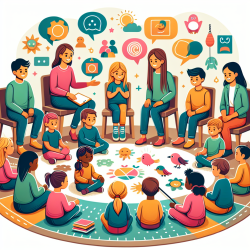Introduction
Bullying remains a significant challenge in schools worldwide, affecting children's mental health and well-being. The study "Individual and Classroom Social-Cognitive Processes in Bullying: A Short-Term Longitudinal Multilevel Study" offers valuable insights into the social-cognitive processes that contribute to bullying behavior. This blog explores how practitioners can leverage these findings to improve interventions and outcomes for children.
Key Findings from the Study
The research highlights the roles of individual and classroom-level social-cognitive processes in bullying perpetration. Key findings include:
- Individual and classroom collective moral disengagement (CMD) are positively associated with bullying.
- Defender self-efficacy (DSE) is negatively associated with bullying, indicating that children who believe in their ability to intervene are less likely to engage in bullying.
- Changes in moral disengagement and DSE over time are linked to changes in bullying behavior.
Implications for Practitioners
Understanding these dynamics provides a framework for developing more effective anti-bullying strategies. Practitioners can focus on:
- Reducing Moral Disengagement: Educators can implement programs that address moral disengagement by fostering empathy and accountability. Activities that encourage students to reflect on the impact of their actions can be beneficial.
- Enhancing Defender Self-Efficacy: Training programs that empower students to intervene in bullying situations can increase their confidence and reduce bullying incidents. Role-playing and peer mentoring can be effective methods.
- Building Classroom Collective Efficacy: Creating a supportive classroom environment where students and teachers work together to prevent bullying can reduce its prevalence. This involves setting clear anti-bullying norms and encouraging positive peer interactions.
Encouraging Further Research
While the study provides a strong foundation, further research is needed to explore the long-term effects of interventions targeting these social-cognitive processes. Practitioners are encouraged to collaborate with researchers to evaluate the effectiveness of different strategies and refine their approaches.
Conclusion
By integrating the insights from this study into practice, educators and practitioners can create safer and more supportive school environments. Addressing the social-cognitive factors that contribute to bullying is crucial for reducing its impact and fostering positive outcomes for children.
To read the original research paper, please follow this link: Individual and Classroom Social-Cognitive Processes in Bullying: A Short-Term Longitudinal Multilevel Study.










